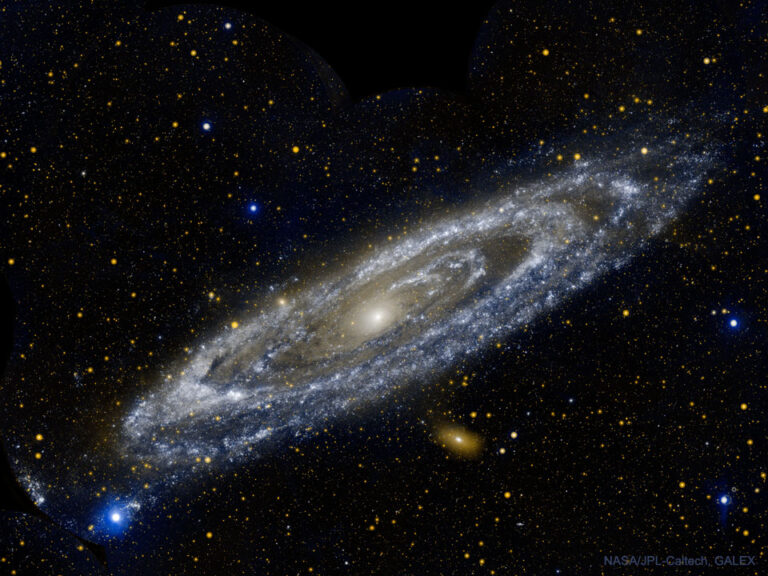螺旋星系横跨太空
This Jan. 10, 2013, composite image of the giant barred spiral galaxy NGC 6872 combines visible light images from the European Southern Observatory’s Very Large Telescope with far-ultraviolet data from NASA’s Galaxy Evolution Explorer (GALEX) and infrared data acquired by NASA’s Spitzer Space Telescope. NGC 6872 is 522,000 light-years across, making it more than five times the size of the Milky Way galaxy; in 2013, astronomers from the United States, Chile, and Brazil found it to be the largest-known spiral galaxy, based on archival data from GALEX. Image Credit: NASA/ESO/JPL-Caltech/DSS 2013年1月10日,这张巨型棒状螺旋星系NGC 6872的合成图像结合了欧洲南方天文台超大型望远镜的可见光图像、NASA星系演化探测器(GALEX)的远紫外数据和NASA斯皮策太空望远镜的红外数据。NG C6872的直径为522,000光年,是银河系的五倍多;2013年,根据GALEX的档案数据,美国、智利和巴西的天文学家发现它是已知最大的螺旋星系。 影像来源:NASA/ESO/JPL-Caltech/DSS


